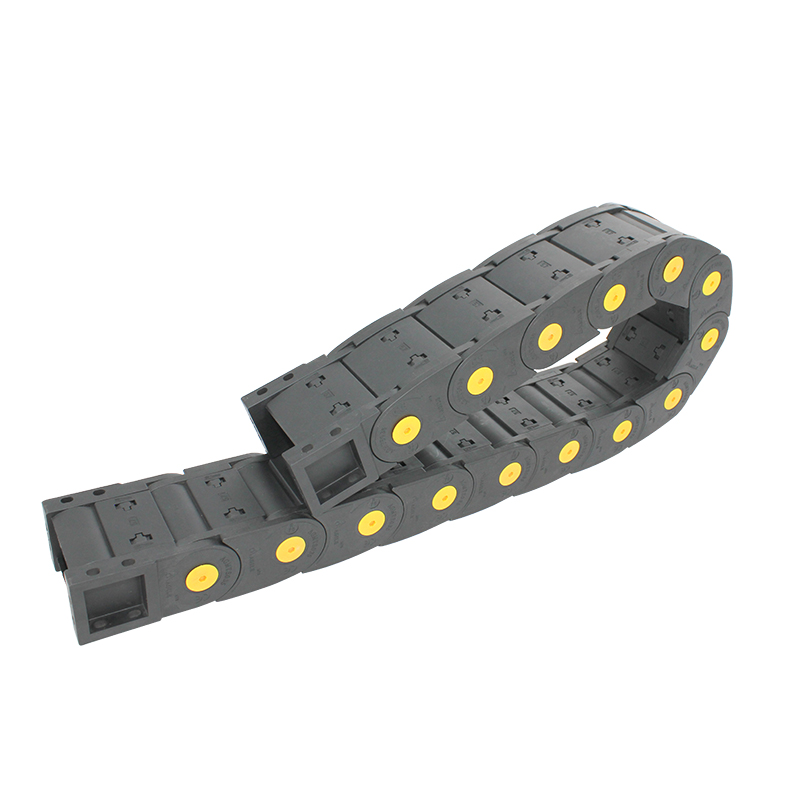Protective Solutions for Hydraulic Hose Management and Drag Chain Efficiency
Hydraulic Hose Drag Chain Efficiency and Reliability in Fluid Transfer
In the modern industrial landscape, the seamless movement of hydraulic hoses is essential for maintaining efficiency and safety in a myriad of applications. One of the most critical components in managing hydraulic hoses is the hydraulic hose drag chain. Designed to protect and organize hydraulic hoses, drag chains play a pivotal role in various sectors, including manufacturing, construction, and automotive industries.
What is a Hydraulic Hose Drag Chain?
A hydraulic hose drag chain, often referred to as a cable carrier or drag chain, is a system of linked segments that create a channel through which hydraulic hoses, electrical cables, or other flexible connections can be guided. These chains are specifically engineered to allow for unrestricted movement while minimizing wear and tear on the hoses and cables. They come in numerous designs and materials to cater to different requirements, ranging from lightweight plastic chains for smaller applications to robust metal chains suitable for heavy-duty use.
Importance of Hydraulic Hose Drag Chains
The primary function of a hydraulic hose drag chain is to manage the physical space and movement of hoses during operation. In environments where machinery operates dynamically — such as in robotics or automated manufacturing lines — hose drag chains are indispensable. They prevent hoses from becoming tangled or damaged and ensure that the connections remain intact, which is critical for the uninterrupted flow of hydraulic fluid.
Moreover, apart from offering protection, these chains contribute significantly to enhancing the lifespan of hydraulic hoses. By absorbing tension and movement, drag chains reduce the risk of kinks and abrasion caused by repetitive motion or contact with sharp edges. This protective role minimizes the likelihood of hose failure, which can lead to costly downtime and potential hazards.
Features and Benefits
hydraulic hose drag chain

When selecting a hydraulic hose drag chain, several features should be considered. Firstly, flexibility is paramount; a good drag chain can adapt to various movement ranges and bending radii without compromising the safety of the hoses. Additionally, many drag chains are designed with open links, allowing for easy installation and maintenance of the hydraulic system.
Another critical feature is the material of the drag chain. Common materials include high-strength plastics, which are lightweight and resistant to corrosion, and metals that offer durability in high-temperature or harsh environments. Each material presents different advantages, making it essential for users to select the right type based on their specific operational needs.
Applications Across Industries
Hydraulic hose drag chains find applications across numerous industries. In manufacturing, they are often utilized in automated assembly lines where machinery and robots require constant movement of hoses and cables. In the construction industry, drag chains help to manage the hydraulic lines of heavy equipment and cranes, facilitating smooth operation while minimizing the risk of hose damage.
Additionally, in automotive applications, hydraulic hose drag chains are vital in ensuring that fluid transfer lines in vehicles remain organized and protected. This not only enhances the reliability of hydraulic systems but also ensures safety during vehicle operation.
Conclusion
In conclusion, hydraulic hose drag chains are a crucial component in the efficient management of hydraulic systems across various industries. By providing protection, enhancing longevity, and promoting safety in fluid transfer applications, they significantly contribute to operational efficiency. As industries continue to evolve and demand increases for robust hydraulic solutions, the importance of hydraulic hose drag chains will only grow, marking them as a key player in the future of industrial fluid dynamics.








